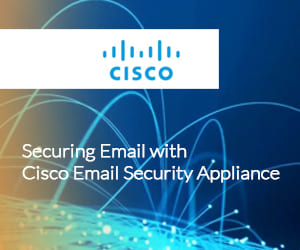الدورة “تأمين البريد الإلكتروني باستخدام جهاز أمان البريد الإلكتروني من سيسكو (SESA) الإصدار 3.1” تعلمك كيفية استخدام جهاز أمان البريد الإلكتروني من سيسكو لحماية أنظمة البريد الإلكتروني من الرسائل غير المرغوب فيها، والبرامج الضارة، والوصول غير المصرح به. وتشمل نطاقها نشر الجهاز، وتكوين ميزات الأمان، وحل المشكلات. تعود هذه الدورة بالفائدة لمحترفي تكنولوجيا المعلومات الذين يرغبون في تعزيز أمان البريد الإلكتروني
The “Securing Email with Cisco Email Security Appliance (SESA) v3.1” course covers several key topics in email security:
- Deployment and Configuration: Learn how to set up and configure the Cisco Email Security Appliance, including network integration and user accounts.
- Spam and Malware Protection: Explore techniques like Talos SenderBase and anti-virus filtering to combat spam and malicious emails.
- Email Authentication: Understand and implement protocols like DKIM, SPF, and DMARC to verify email sender legitimacy.
- Data Loss Prevention (DLP): Discover methods to prevent sensitive information from leaving the organization via email.
- Content Filtering: Create and enforce email policies by filtering messages based on specific content criteria.
- Monitoring and Troubleshooting: Gain skills to monitor email security activity, identify and troubleshoot issues, and ensure smooth system operation.
These topics equip individuals with the knowledge and skills to configure, manage, and maintain secure email systems using the Cisco Email Security Appliance.
- Target audience: Individuals with 1+ year of experience in administering and maintaining email systems.
- Users familiar with basic email concepts and network security principles.
This suggests that the course assumes a basic understanding of:
- Email systems: Familiarity with how email systems work, including sending, receiving, and managing email accounts.
- Network security: Basic knowledge of network security concepts like firewalls, intrusion detection, and network access control.
Therefore, while there are no formal prerequisites, having these basic skills and experience will likely be beneficial for taking full advantage of the course and effectively applying the learned concepts to real-world scenarios.
